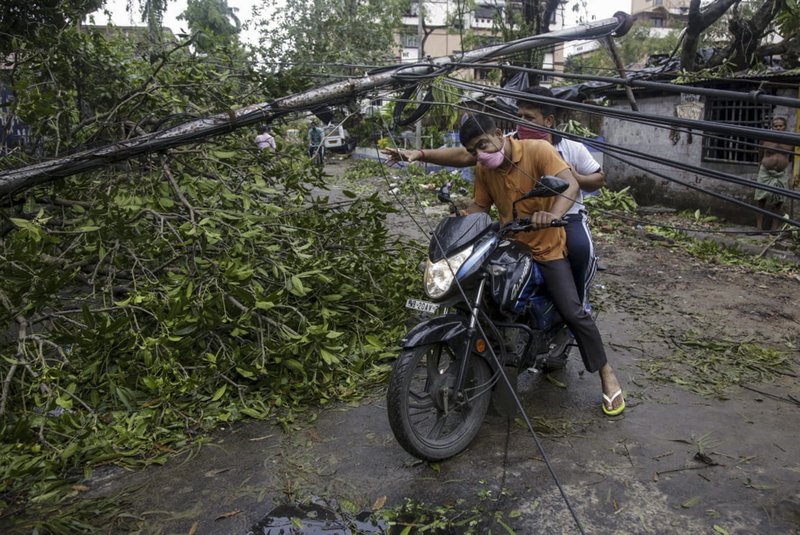NEW DELHI -- Debasis Shyamal, a fisherman, forgot about social distancing. He crammed himself into a government shelter, minutes before Cyclone Amphan crashed into his coastal village in West Bengal on Wednesday with winds of up to 105 mph.
He stayed awake in the dark, listening to the carnage outside. "No one was thinking about the virus. We were just trying to stay alive," he said.
The cyclone has now dissipated. But the pandemic hasn't.
In the past 48 hours, the cyclone killed 77 people and the coronavirus nine in West Bengal, one of India's poorer states. Even before the cyclone, its pandemic response was lagging. The state has one of the highest fatality rates from covid-19 in India. With an economy crippled by India's eight-week lockdown, and health care systems sapped by the virus, authorities must tackle both covid-19 and the cyclone's aftermath.
[CORONAVIRUS: Click here for our complete coverage » arkansasonline.com/coronavirus]
"I have never seen such a disaster before," said West Bengal Chief Minister Mamata Banerjee.
The challenges are many: crowded shelters that could become viral clusters; outbreaks of other diseases stemming from the flooding and storm damage; and jobless migrant workers returning to villages from cities like Mumbai and New Delhi and potentially carrying the virus with them.
The pandemic made evacuations harder since many cyclone shelters were being used for quarantining virus patients. Dr. Rashmi Kamal, the administrative head of the coastal East Midnapore district, said masks were provided at shelters, which would remain open for a few more days until flooding subsides.
The cyclone has also magnified inequalities, with poor families more likely to have stayed in crowded, enclosed shelters.
[Gallery not loading above? Click here for more photos » arkansasonline.com/523amphan/]
Dr. Anant Bhan, a public health specialist, said authorities needed to simultaneously consider "everyone potentially at risk" while dealing with diseases triggered by the cyclone.
He said those who took refuge in crowded spaces need to be tested for the virus, something West Bengal had already been struggling to do. "If you don't have enough tests, you need to look at symptomatic testing," he said, warning that failing to do so could spread the virus further.
The pandemic in India has yet to peak, with rural areas largely unaffected. Authorities fear that the returning migrant laborers could change that. In adjacent Bihar state, one in four migrants who returned from New Delhi tested positive for the virus.
"We were suffering from the economic impact of the coronavirus, dealing with the returning migrants ... with the cyclone, the state is now completely destroyed," said Banerjee.
With streets and suburbs flooded, and sanitation systems decimated, the "risk of cholera is very high in urban areas," said Dr. Suman Kanungo, an epidemiologist at the National Institute of Cholera and Enteric Diseases in Kolkata.
He added that authorities needed to ensure that clean water was available to prevent bacterial infections like diarrhea.
Information for this article was contributed by Chonchui Ngashangva, Sheikh Saaliq and Emily Schmall of The Associated Press.
A Section on 05/23/2020
